5 am on a four-lane highway leading out of Kochi. I assume the occasional flashes of light in the sky are the signs of an approaching storm, but Shibin, my passenger, disagrees. He tells me that we are a bit over the speed limit and those flashes are the speed cameras going off. Shit! That’s what surplus power does – it makes the car run smooth and easy. It makes it run deceptively fast on small throttle inputs. There is no storm or a Marty McFly in a DeLorean approaching – we are the storm.
Now, a decade ago, if you sent so much power to the front axle, you would need to pay attention. You would be fighting an armful of torque steer and enter into a wrestling match with the steering wheel every time the turbo lit up. But not so in this 2018 car. In this Generation III vRS, which Pete says is putting out more than 324hp, big speed is natural – the car gets there without me having to concentrate hard. In here, rather than sweating bullets, I’m chatting with Shibin as I unwittingly rack up a few more fines.
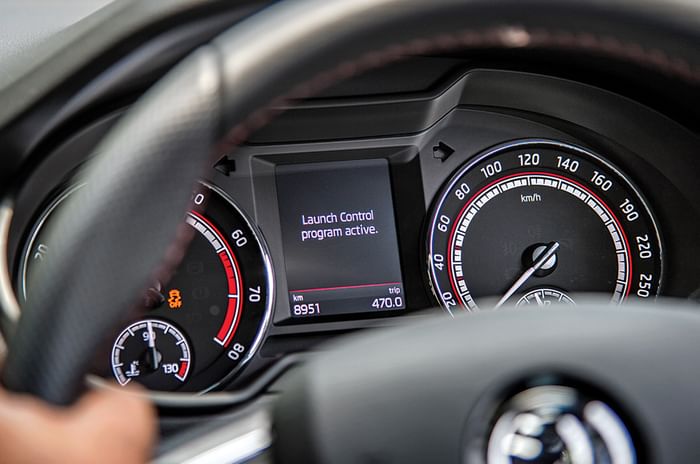
A little later, Peter Chacko tells me that all the Gen III vRS needs to get the 2.0-litre engine to do a number switcheroo (233hp to 324hp) is a Stage 2 remap, which is quite astonishing. It means these new engines are strong enough to take the beating without needing internal reinforcement. The older vRSes here need serious hardware upgrades to get to similar numbers.
The driving experience of the Gen III is similarly uncomplicated. You slip into the superb bucket seats, snap on the seatbelts, slide the gear lever into ‘D’, and it is warp speed, Scotty. There is no sweat involved in getting a quick 0-100kph time out of the car either. There is no lag, no need to perfectly time clutch-and-wrist action – the DSG will sort out lightning quick, perfectly executed gear changes every time. The launch control and standard XDS limited slip differential will sort out traction issues and slingshot you down the road with absolutely no drama. Seriously, there is no thinking involved to drive this car fast.
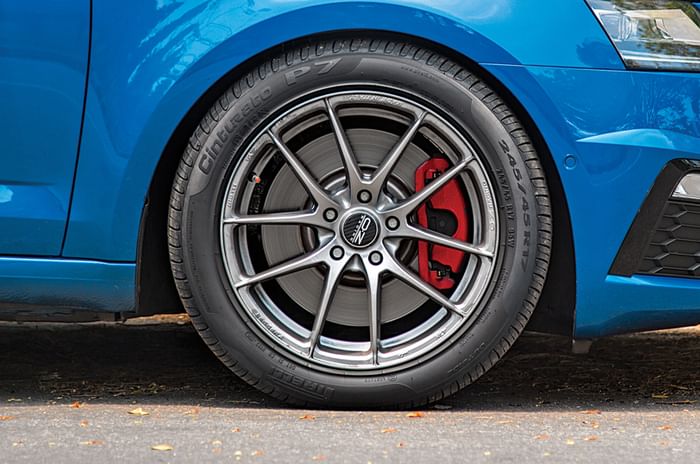
At this point, I’d like to break into the story with a confession. The acceleration times we recorded for the Gen III vRS is actually of the white car (see box). It had the better Michelin Pilot Sport 4 tyres that helped it grip off the line better. The blue car’s Pirelli P7 Cinturatos weren’t hooking up off the line as cleanly and resulted in 0.2sec slower times.
Look at the times and you will see that a stock vRS will have no trouble keeping up with Pete’s vRS (most likely because the surface we tested on wasn’t the grippiest). After 80kph though, the remapped car takes its first gulp of Redbull. At 100kph, there is a 0.65sec gap and at 120kph, that widens to nearly a second. At 140kph, Pete’s car is 1.5sec ahead, and from then on, the stock vRS simply turns pink with embarrassment.
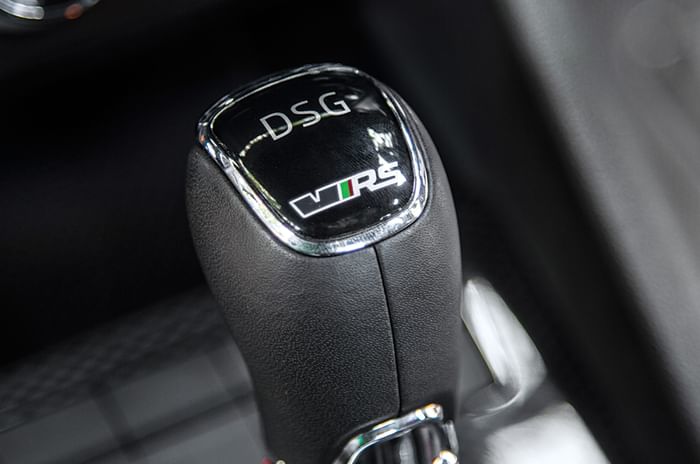
More than the sheer speed and the effortlessness of it all, what blows me away is how easy it all is. Modern suspension setup and wheel geometry have mostly cured violent torque steer and this car’s Bilstein B6 suspension makes sure all this power stays on the road without the need for teeth-rattling suspension stiffness. It turns well, easily puts down whatever power your stupid right foot feeds it, and when you do push it, the safety net comes in and gently nudges you away from danger. It does so without being overly intrusive and makes you look like you know what you’re doing; that, for me, is what makes this car so good.
Too much wheelspin! Abort! Abort! Abort!
| Performance | |||
|---|---|---|---|
| Gen I Octavia vRS mods | Gen II Laura vRS mods | Gen III Octavia vRS mods | |
| 10kph | 0.1s | 0.4s | 0.5s |
| 20kph | 1.2s | 1.1s | 1.1s |
| 30kph | 2.0s | 1.7s | 1.6s |
| 40kph | 2.6s | 2.3s | 2.2s |
| 50kph | 3.2s | 2.9s | 2.8s |
| 60kph | 3.9s | 3.8s | 3.4s |
| 70kph | 5.0s | 4.5s | 4.0s |
| 80kph | 5.8s | 5.1s | 4.6s |
| 90kph | 6.7s | 5.8s | 5.3s |
| 100kph | 7.6s | 6.6s | 6.0s |
| 110kph | 8.8s | 8.0s | 6.9s |
| 120kph | 10.4s | 9.0s | 8.0s |
| 130kph | 12.0s | 10.2s | 9.2s |
| 140kph | 13.7s | 11.5s | 10.3s |
| 150kph | 15.6s | 13.3s | 11.7s |
| 160kph | 18.6s | 15.5s | 13.3s |
| 170kph | - | 17.6s | 15.2s |
You need a bit more skill to get the best out of the Laura vRS. It has a manual gearbox and that means you actually have to work to get the best times out of it. Pete’s says it has more than 300hp and to get it to that figure (up from the stock car’s 182.5hp), it needs a Stage 3 remap and a turbo upgrade. To get the best times out of it, I need to hold the clutch just below the biting point, hold revs at around 3,500rpm and get off the clutch while fuelling a thin line between bogging down and wheel-spinning away precious milliseconds. The 1.8-litre motor is as sweet as I remember it, but this one gets to its redline waaaay faster. Snap into second, a bit of wheelspin, and it is already at the redline again. Grab third and that is when the tyres hook up and the Laura lifts its skirt, finds proper traction and runs. Everything about the run is fun – that sweet gearshift encourages you to bang it in, the steering has good heft, and with the upgraded suspension, that little bit of slop I remember in the stock Laura vRS is gone. This one even shrugs off the mild bumps of uneven tarmac we hit as we cross 150kph.

Again, the raw performance numbers are similar to the stock vRS until around 70kph. Then, the Pete’s car starts sucking in the horizon much faster. There’s 1.5sec of air between the two by 100kph, 4.2sec by 140kph and by 170kph, Pete’s vRS is in the next district (read that as 7.6sec quicker). That’s nuts whichever way you look at it!
Before current owner Aswin Reghu bought it, it used to belong to Peter, and so, it has everything thrown at it. The Bilstein B16 suspension with H&R anti-roll bars helps it corner hard and allows it to ballerina over tricky surfaces and through corners without feeling too stiff; that’s what makes it usable. The only thing you have to learn is how to feed in power. Too much throttle mid-corner and the unloaded inside wheel will try and spin that power away before stability control kicks in and chops that power. What this means is that you need to drive it smooth to get it to give you its best. Unlike the new Octavia which is devastatingly quick all the time and will cover up for you when you overcook it, you need to up your game a bit to drive this car fast. You need to learn its nuances and it is the work that you put in to earn your reward that makes this car more involving and, perhaps, a bit more thrilling to drive than the new one.
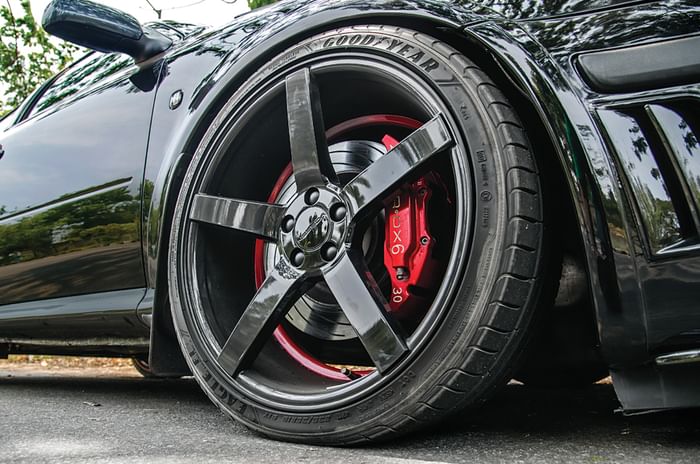
The old beast
You know Rajpaul Thomas’s Generation I Octavia vRS is a tough old beast the minute you hear it. Your ears pick up the Milltek exhaust from a mile away and it is a sound peppered with loud hisses and whistles from the Forge blow-off valve. It then appears out of the darkness looking very sinister and very venomous. Painted in Rajpaul’s own shade of black (yes, he has his own shade of black) and with a splitter hanging millimetres off the deck, this first-generation Octavia has pages and pages of mods thrown into it to get it to the 300-plus horsepower it is now making. It certainly isn’t the friendly everyday boosted car that the other two are. Rajpaul has even thrown out the rear seats for ermmm... Pete’s sake!
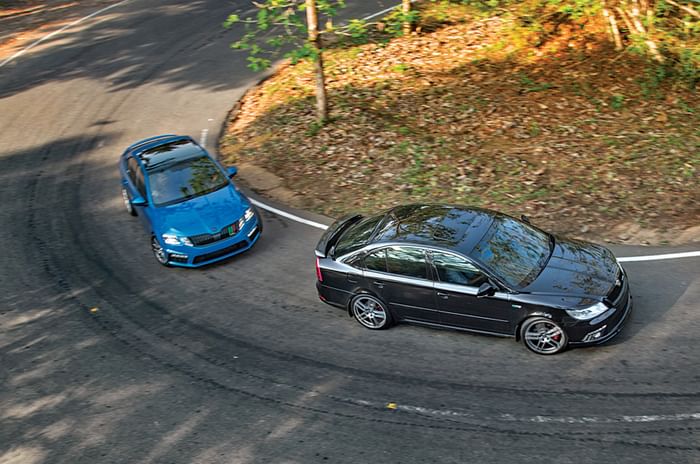
His car is low, loud, stiff and grumbles at you if you don’t quickly grow the requisite chest hair you need to drive it fast. The SPEC triple-plate clutch makes it incredibly tricky to get a clean start off the line. Even with a 6,000rpm dump, the car bogs down momentarily before blaring down the road. The short-shifter needs measured but firm inputs to get it to shift quickly and the whole car buzzes like it is alive; it is no slouch. After that initial bog at clutch dump, it’ll rev out and you have to quickly grab second where again there is some lag before the energy kicks in. Shift to third and that’s where the party begins. Third is a looooong gear – the noise, the tingling in your spine, the turbo spooling violence; it is quite intimidating, to be honest. 100kph is gone in 7.6sec (1.4sec quicker than the stock car), 140kph flashes by in 13.7sec and 150kph comes up in 18.6sec, a whole 5.5sec faster than the old car. If I could get the launch right, I’d safely assume times that are at least 1.5sec quicker. Most evident after wrestling with this beast is that this car is the most demanding to drive of the three. It feels like it has been stretched to what is physically possible (it mostly has been), and of the three, it is the one that isolates you the least from its physicality. The others throw a 324hp punch with varying degrees of velvet-lined gloves; this car simply throws Mike Tyson at you and you need to have your wits about you when it does.
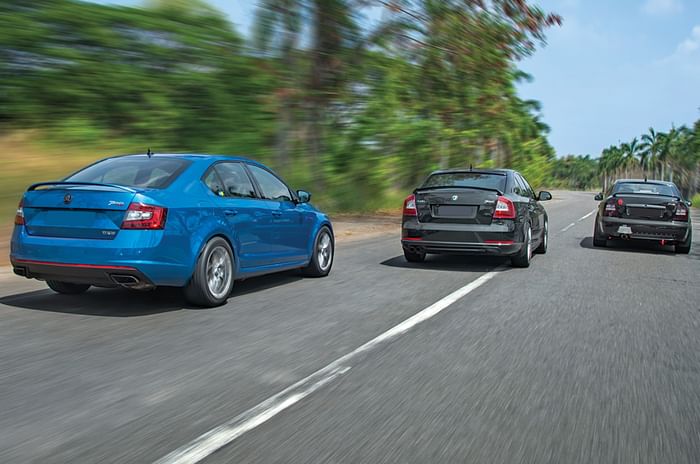
It is now incredibly hot and with all the shots in the bag, we decide to call it a day. I’m given a choice of driving what I want back to where the morning started and I don’t hesitate to pick the new one. You see, Gen I and Gen II are more demanding and hence more true to the reason you want to make them go faster in the first place. They will put you in the hot seat and make you feel every second of every redlined gearshift. Gen III? It’ll just get you home before you know it. It’s a bit like time travel.
| Mod list | ||
|---|---|---|
| GEN I OCTAVIA vRS | GEN II LAURA vRS | GEN III OCTAVIA vRS |
| Pete’s Performance Remap | Pete’s Custom Remap – Stage 3 | Pete’s Custom Remap – Stage 2+ |
| JBS04 Turbo stage 3 | JBS Hybrid turbo upgrade | Milltek full exhaust including decat downpipe |
| ECS Lightweight Pulleys | Bilstein B16 iRC electronic control suspension | Forge full intake system including intake pipe and turbo muffler delete |
| ECS Fuel Filter | Tarox 6-pot kit in front and uprated G88 rotors at the rear | Bilstein B6 with H&R springs |
| Hitachi Ignition Coil Pack | H&R ARBs at the front and back | |
| Evo Heat Shield | Milltek full exhaust including decated downpipe | |
| Carbonio Cold Air-Intake | Carbonio stage 2 intake system | |
| 3.0-inch Air Mass Meter | Uprated coil packs and sparks | |
| 310cc Injectors | Braille lithium-ion heavy-duty battery | |
| 4Bar Fuel Pump | ||
| 4Bar Fuel Regulator | ||
| Forge 007P Diverter Valve | ||
| Forge Turbo Intake Pipe | ||
| Forge Front Mount Intercooler | ||
| JBS Cast Manifold | ||
| Milltek 3.0-inch Exhaust System | ||
| ABD Racing Intake Manifold | ||
| Neu Speed Short-Shifter | ||
| Wavetrac Differential | ||
| SPEC Triple-Plate Clutch | ||
| H&R Sport Cup Kit Suspension | ||
| H&R Upgraded Anti Roll Bars | ||
| H&R Strut Braces | ||
| H&R ‘Triple C’ Camber Adjustment Bolts | ||
| All round Powerflex Polyurethene Bushes | ||
| VF Engineering Lower Pendulum Engine Mount | ||
| VF Engineering Transmission Side Mount | ||
| VF Engineering Engine Side Mount | ||
Rough road package

The white Generation III vRS is actually the sensible 324hp car. Mathew Joshua’s car has an identical setup to the blue Octy, but with one crucial difference – the B6 suspension hasn’t been lowered 30mm like on the blue car. This means you don’t have to constantly worry about scraping the chin. You also don’t have to listen to the tyres rubbing against the wheel arches when you corner really hard (the blue car did that). An even more practical 324hp car, if you will.


















































